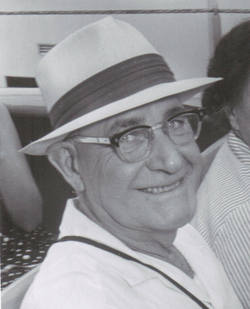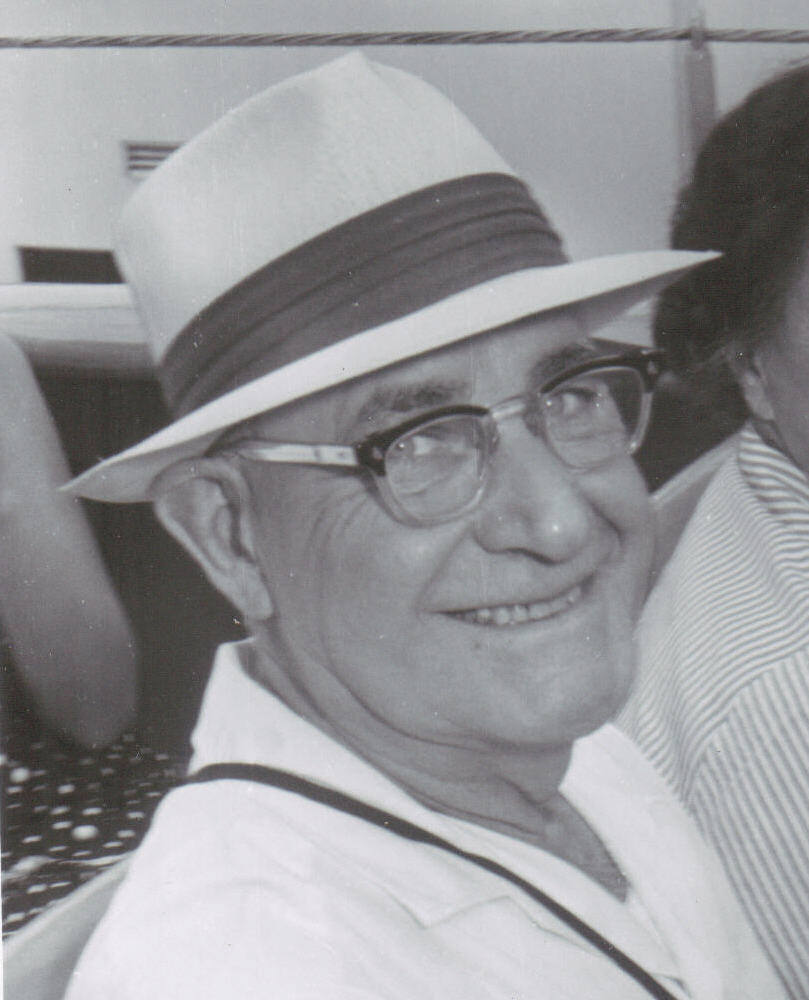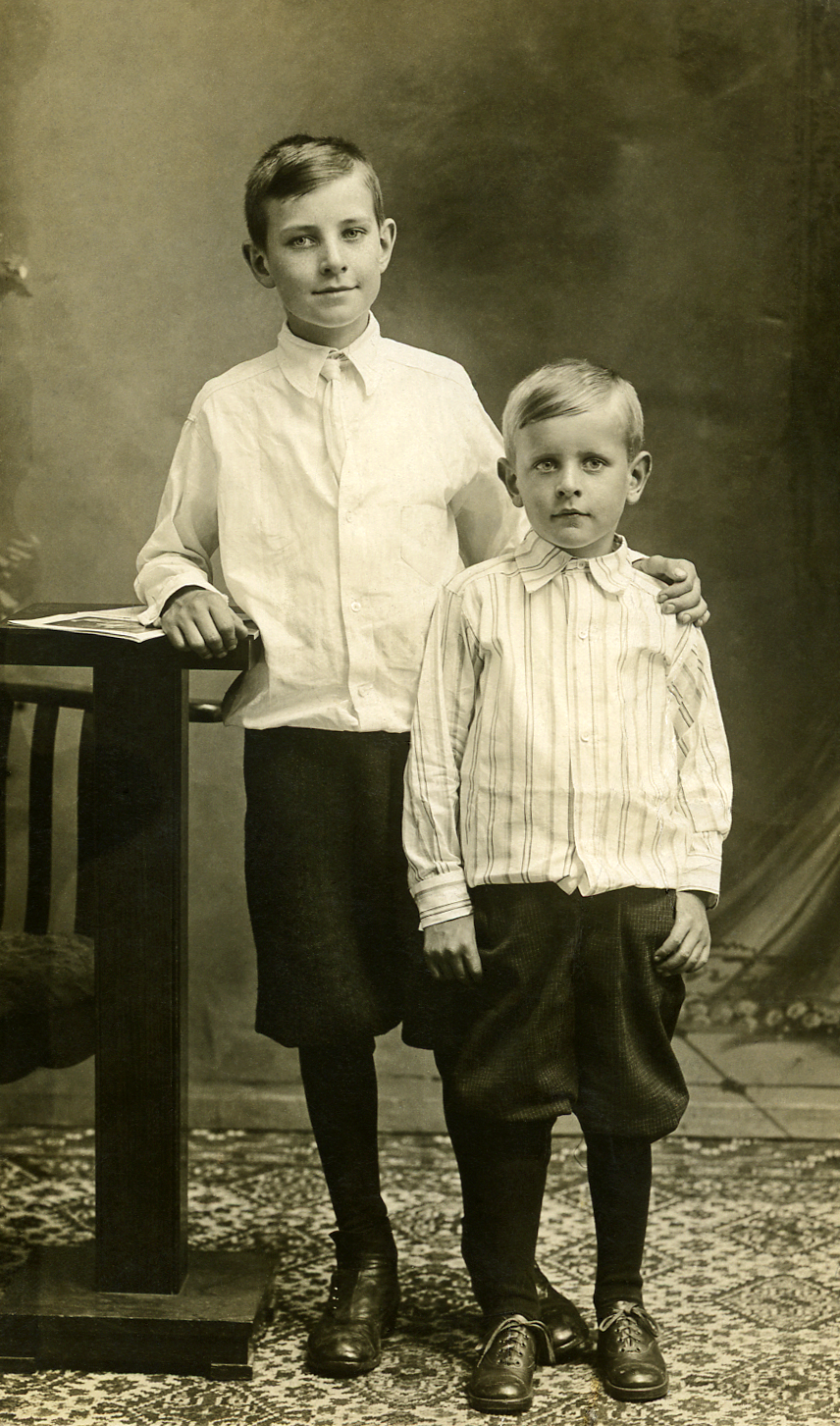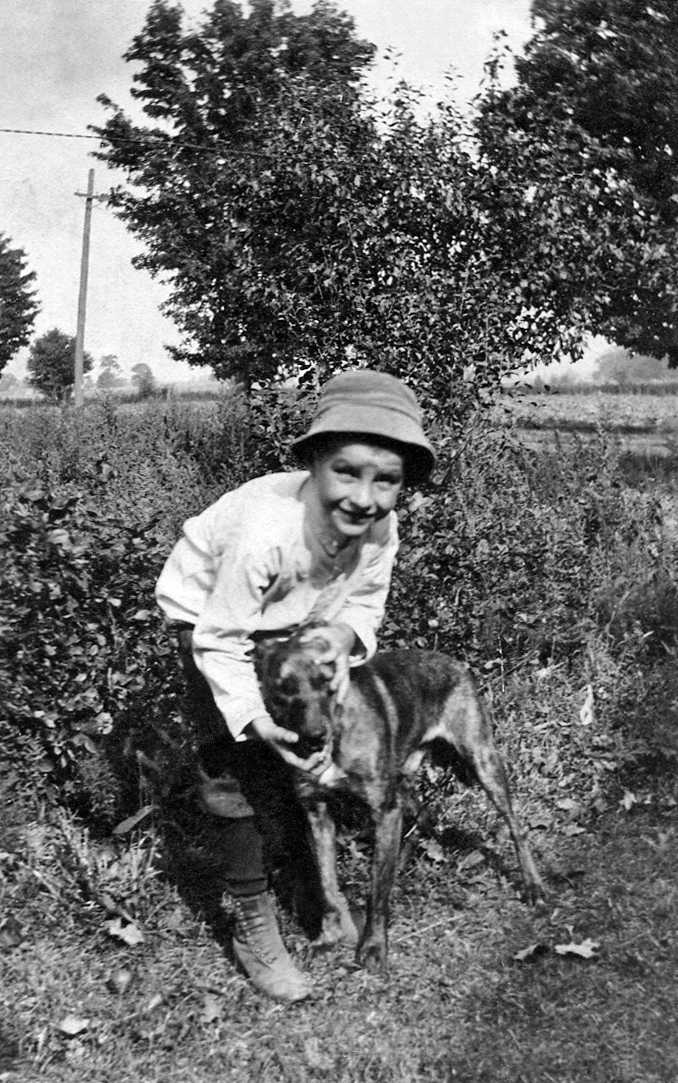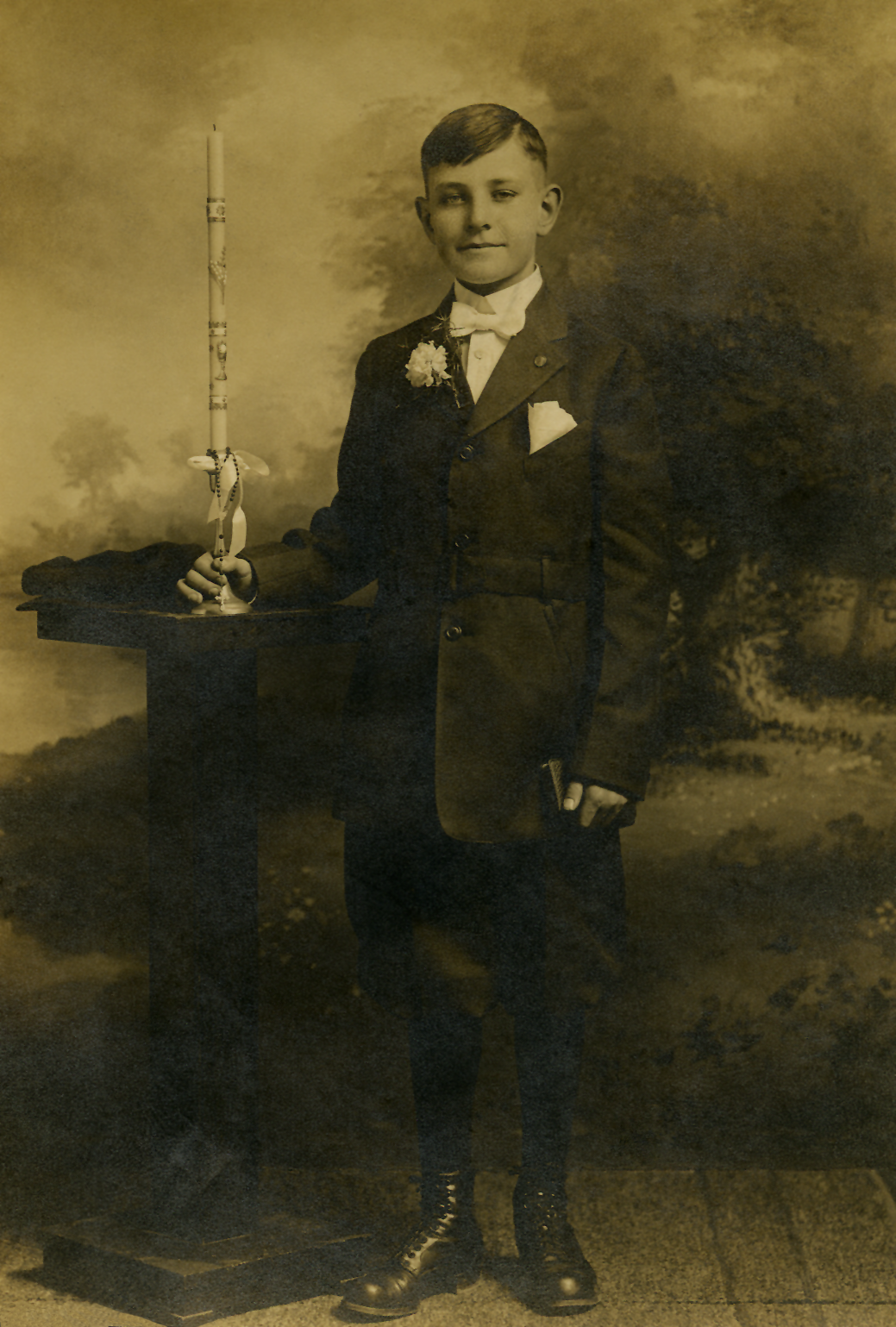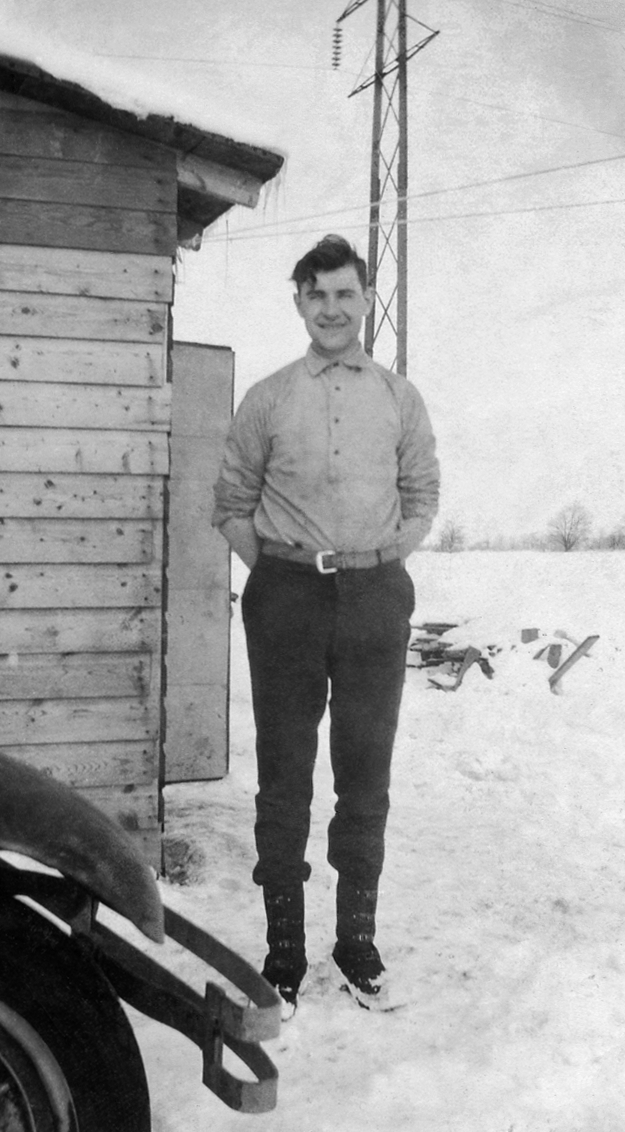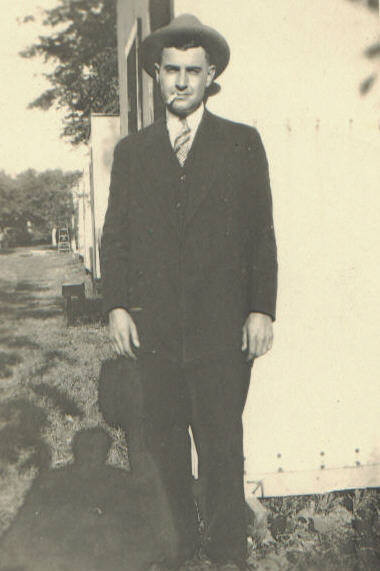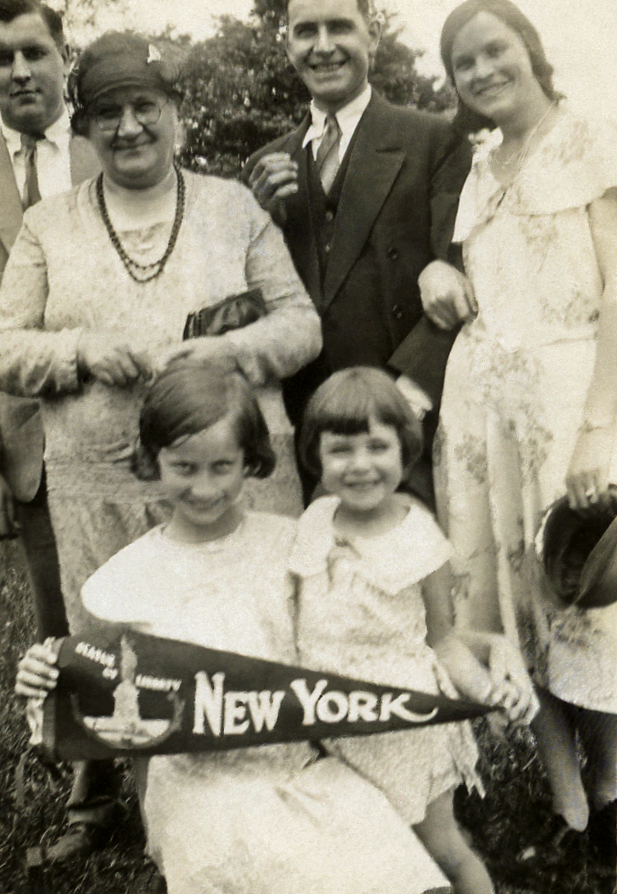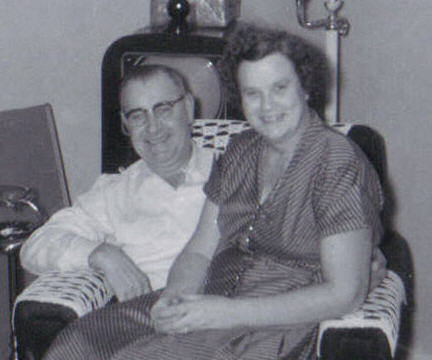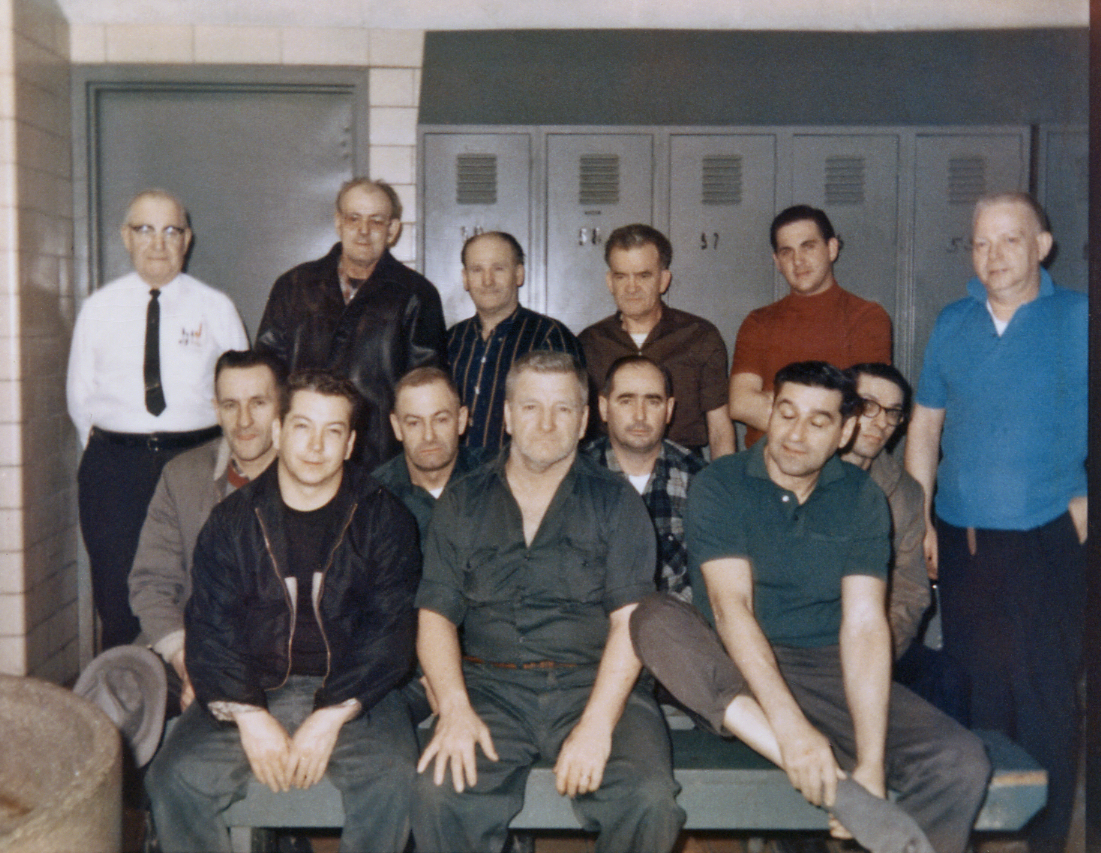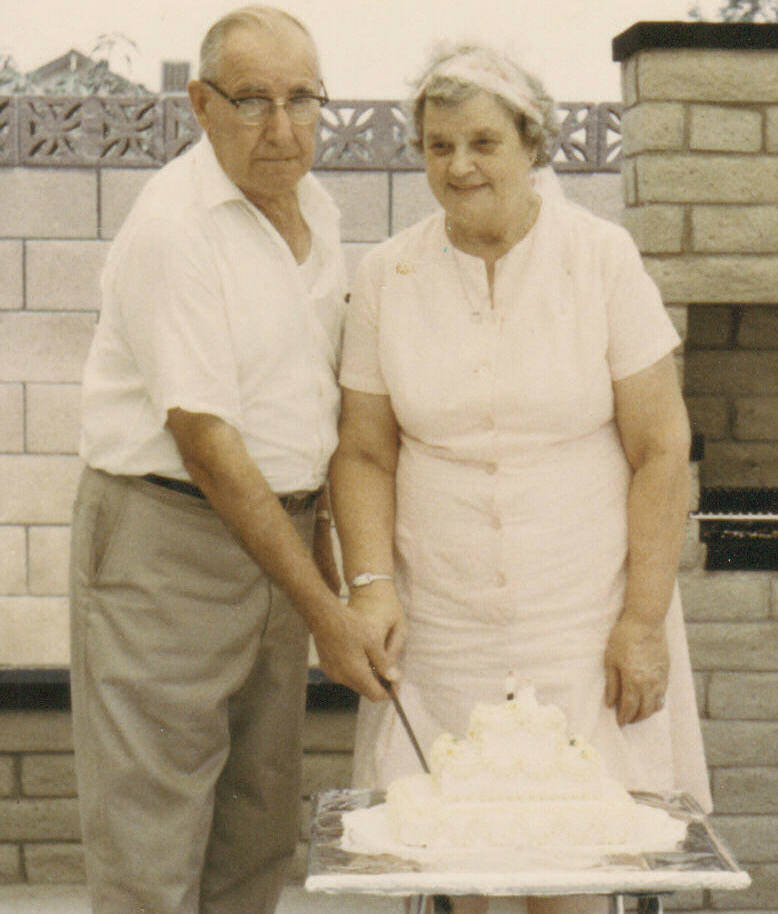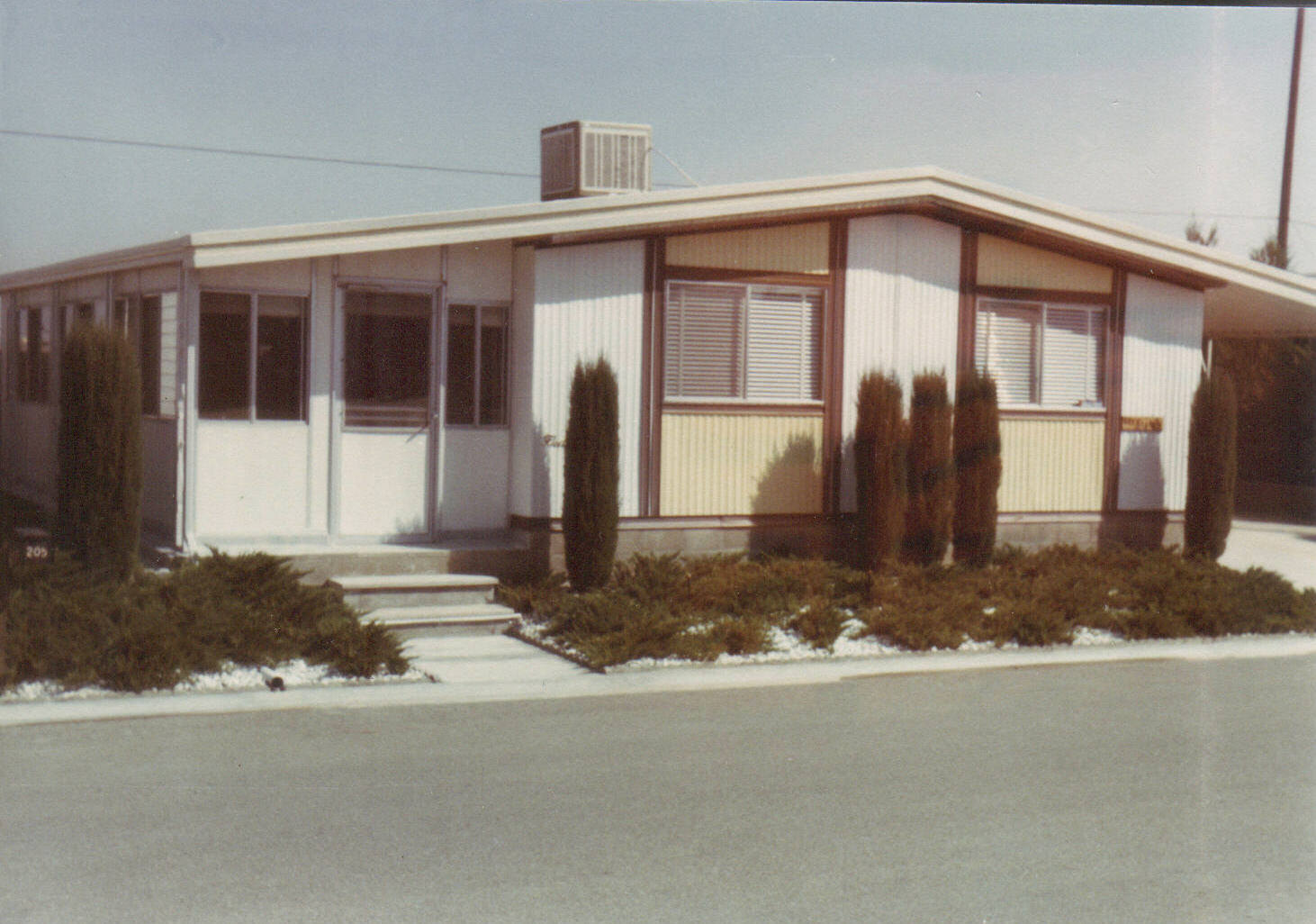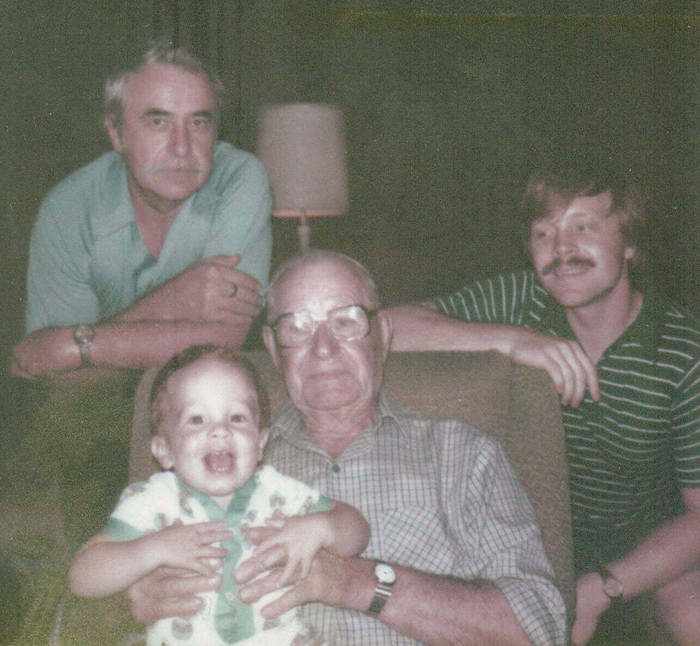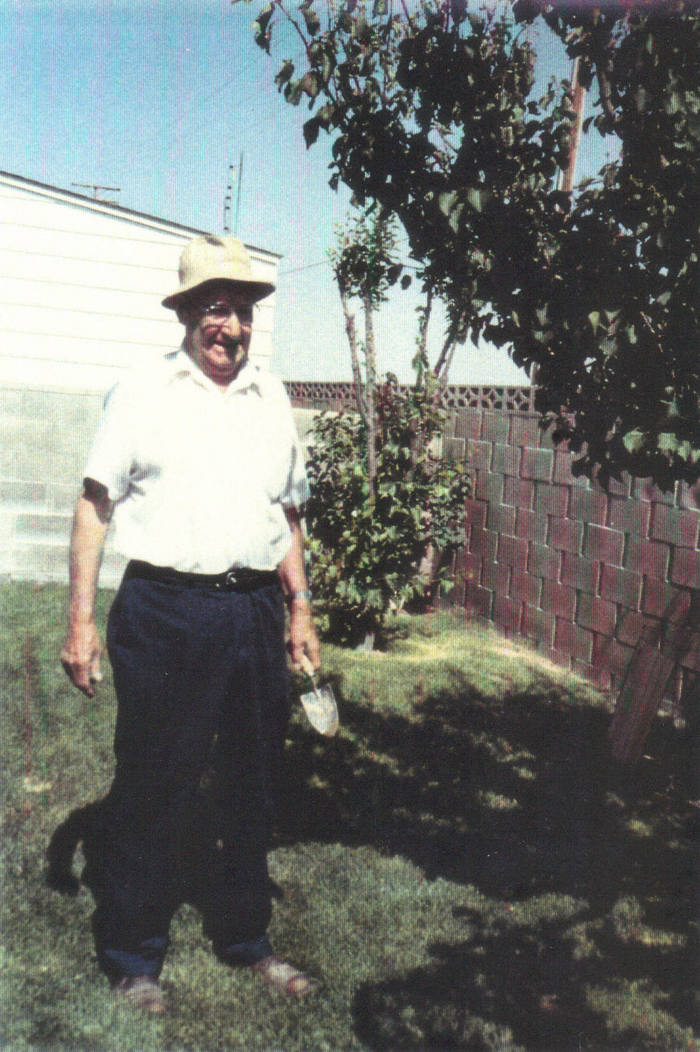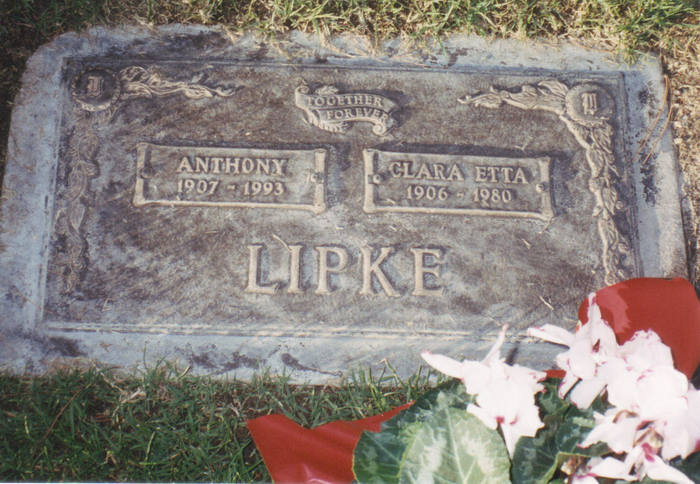Around 1910 his family moved to a farm in the area known as Taft Settlement, just outside the village of North Syracuse. The younger children attended the nearby one-room rural schoolhouse (Cicero School #9) up through the sixth or eighth grades. The whole family farmed, and carried wagonloads of produce to the farmers' market on Syracuse's north side to sell.
Tony was hard of hearing in his right ear for most of his life, thanks to an untreated ear infection that burst his right eardrum during his childhood. After that he never liked swimming or getting his head wet.
On 22 April 1916, when Tony was nine, his father, mother, and all the minor Lipke children were granted U.S. citizenship.
The Lipke kids were all big for their ages. Tony had a quietly independent streak and decided early that he wanted to be self-supporting without being a farmer. It was said that when he was about 15 (following the examples of his older siblings) he left school, ran away from home, and lied about his age to get work, even while dutifully turning over his paycheck each week to help support his family. During the rest of his life he was embarrassed about his lack of education and poor spelling and handwriting, and he hated to write. But in Syracuse in those days, a strong, hard-working and alert breadwinner could earn enough money to support a family without needing much formal education.
In 1924 Tony was hired by the Crouse-Hinds Company in Syracuse to run a metal nut-making machine. It was while running a rivet machine in the Crouse-Hinds Guard Department (making metal guards for light fixtures) that he met young Bill Gratien (Memorial ID 76116219) who would become his lifelong buddy. Tony would remain with the Crouse-Hinds Company, which manufactured industrial light fixtures, electrical switches and equipment systems, for 45 years. Crouse-Hinds' famous traffic signals and illumination fixtures would light important installations (including factories, airports, and lighthouses) all over the world, from the ore mines in Kennecott, Alaska to Mt. Rushmore to the Panama Canal.
In January 1926 Tony's father died. It wasn't long after that when he and a neighboring farm girl, Clara Kreischer, who had also just lost her father, became close and decided to get married. They "eloped" to nearby Liverpool, New York and were wed at St. Joseph's Church by Rev. Edward G. Quaid on 18 August 1926. Two Taft Settlement friends, Myrtle Fairfield and Chester Horner, went with them to serve as witnesses. Tony had his mother's signed certificate giving her permission for the marriage, since Tony was only 19. The marriage would be a happy one lasting 53 years and producing three children and 11 grandchildren.
Tony and his friend, Bill Gratien, with a little help from their friends and relatives, became house builders in their spare time--and they learned on the job. First they built "the little house," Tony and Clara's first home, a three-room structure with a shed/outhouse on the back, on the rear portion of a one-acre lot along the east side of today's Church Street, North Syracuse (former Kreischer farm land; the house has been relocated and today is numbered 803 Church Street). Tony and Clara lived there from 1926 to 1932 or 1933. Then Tony and Bill, with help from "all the guys at Crouse-Hinds" built "the grey-shingled house" (today 901 Church Street), where Tony and Clara and their children lived from 1932 or 1933 to 1949, with a slight interruption during the worst depth of the Great Depression (1938), when they had to move out and rent their home to others (the Kitchen family) because they couldn't afford the mortgage payments. After eight months with the family living in a tumble-down farmhouse Tony was renovating in lieu of paying rent, Tony won $1,100 in "the Treasury Balance," a street lottery (a variation on the "numbers racket"). He collected his winnings under his hat in a bar room, and they were able to pay off their debts and move back into their home. There was even a little money left for Tony and Clara to make a short trip to the 1939 World's Fair in New York City.
During the Depression years Crouse-Hinds employees were laid off to half-time work, and Tony scraped by on a reduced salary of $10 a week, plus odd jobs such as painting houses, putting up barns, and building a chicken coop with his pal, Bill, for neighboring farmer Mr. Story, who paid them 25 cents an hour each. The World War II years were not as full of privations, but were just as stressful. Crouse-Hinds and its employees were moved to a wartime production footing. Tony, too young to serve in World War I, and too old to serve in World War II, did his part on the home front. He was also a member of the Crouse-Hinds bowling team, reflecting the congenial "family" nature of the company in those pre-union years.
Tony and his friends and coworkers built the white two-story home at 611 Church Street in North Syracuse where he and Clara and many family members lived between the years of 1949 and 1963. They rented out the back lot acreage to a neighbor who grew corn on it. Tony and Clara raised apple trees, flowers, and a patch of strawberries, and kept their yard immaculately trimmed. Tony also lent his time and expertise to help build houses for others, including ones for his brothers, Jack and Leonard, and the first home for his oldest daughter and her family, around the corner on Taft Road.
In 1963, with their children grown and gone, Tony and Clara moved to a new, smaller home at 7844 Glenwood Drive North, in Liverpool. Then in 1969, after unionization had made Crouse-Hinds an increasingly less-pleasant place to work, Tony took an early retirement at the age of 62. He had spent his entire working life with the company, including 18 years in the Screw Machine Department before taking over the position of night shift foreman when his boss and friend, John "Scotty" Sanderson, retired in 1958.
Now, after almost 20 years of their much-loved annual summer vacation road trips "Out West" along Route 66, Tony and Clara were finally able to realize their dream of living year-round in California. They immediately moved to their long-owned "retirement" home at 4823 Coldbrook Avenue in Lakewood, California, where Tony's sister, Helen Poehlman (1896-1983), had been living. They were following the earlier examples of Tony's siblings, Helen and Leonard, in leaving Upstate New York and moving to "The Golden State."
The Lipkes spent nine years together in Lakewood until their neighborhood began to decline. After their home was robbed, Tony and Clara relocated to Leisure Lake Mobile Park on the outskirts of Lancaster, California in 1978. After Clara died in 1980, Tony remained at the Park where he was an attentive and helpful neighbor and friend. In the high Mojave Desert he raised grapes, tomatoes, fruits, roses and other flowers (always the farm boy), kept an immaculate lawn, did his own cooking and handled all his usual chores (including making roofing and air-cooler repairs atop his doublewide) until his very last days. He continued to fix things and make things for family and friends. He handcrafted a desk and chair for a granddaughter, as well as a supersized sturdy wooden small-animal carrier of his own design. A lifelong lover of cars and roadtrips, he continued to make his annual drives Back East, now solo, to see family and friends in Upstate New York. His Yorkshire terrier, Muffy, was his constant companion.
The last surviving "Lipke kid," Tony Lipke died on 7 September 1993 at the age of 86 years, at Henry Mayo Hospital in Valencia, California. He had been recovering at his daughter Elleanor's home in Santa Clarita following stomach surgery when he suffered his fatal heart attack. He was buried beside Clara, the love of his life, after 13 years apart from her. His twinkling blue eyes, affectionate winks, loving smile, generosity and kindness, and his quiet but strong presence and character will long be missed and remembered.
[CLICK on each photo to read caption and view full-size.]
Around 1910 his family moved to a farm in the area known as Taft Settlement, just outside the village of North Syracuse. The younger children attended the nearby one-room rural schoolhouse (Cicero School #9) up through the sixth or eighth grades. The whole family farmed, and carried wagonloads of produce to the farmers' market on Syracuse's north side to sell.
Tony was hard of hearing in his right ear for most of his life, thanks to an untreated ear infection that burst his right eardrum during his childhood. After that he never liked swimming or getting his head wet.
On 22 April 1916, when Tony was nine, his father, mother, and all the minor Lipke children were granted U.S. citizenship.
The Lipke kids were all big for their ages. Tony had a quietly independent streak and decided early that he wanted to be self-supporting without being a farmer. It was said that when he was about 15 (following the examples of his older siblings) he left school, ran away from home, and lied about his age to get work, even while dutifully turning over his paycheck each week to help support his family. During the rest of his life he was embarrassed about his lack of education and poor spelling and handwriting, and he hated to write. But in Syracuse in those days, a strong, hard-working and alert breadwinner could earn enough money to support a family without needing much formal education.
In 1924 Tony was hired by the Crouse-Hinds Company in Syracuse to run a metal nut-making machine. It was while running a rivet machine in the Crouse-Hinds Guard Department (making metal guards for light fixtures) that he met young Bill Gratien (Memorial ID 76116219) who would become his lifelong buddy. Tony would remain with the Crouse-Hinds Company, which manufactured industrial light fixtures, electrical switches and equipment systems, for 45 years. Crouse-Hinds' famous traffic signals and illumination fixtures would light important installations (including factories, airports, and lighthouses) all over the world, from the ore mines in Kennecott, Alaska to Mt. Rushmore to the Panama Canal.
In January 1926 Tony's father died. It wasn't long after that when he and a neighboring farm girl, Clara Kreischer, who had also just lost her father, became close and decided to get married. They "eloped" to nearby Liverpool, New York and were wed at St. Joseph's Church by Rev. Edward G. Quaid on 18 August 1926. Two Taft Settlement friends, Myrtle Fairfield and Chester Horner, went with them to serve as witnesses. Tony had his mother's signed certificate giving her permission for the marriage, since Tony was only 19. The marriage would be a happy one lasting 53 years and producing three children and 11 grandchildren.
Tony and his friend, Bill Gratien, with a little help from their friends and relatives, became house builders in their spare time--and they learned on the job. First they built "the little house," Tony and Clara's first home, a three-room structure with a shed/outhouse on the back, on the rear portion of a one-acre lot along the east side of today's Church Street, North Syracuse (former Kreischer farm land; the house has been relocated and today is numbered 803 Church Street). Tony and Clara lived there from 1926 to 1932 or 1933. Then Tony and Bill, with help from "all the guys at Crouse-Hinds" built "the grey-shingled house" (today 901 Church Street), where Tony and Clara and their children lived from 1932 or 1933 to 1949, with a slight interruption during the worst depth of the Great Depression (1938), when they had to move out and rent their home to others (the Kitchen family) because they couldn't afford the mortgage payments. After eight months with the family living in a tumble-down farmhouse Tony was renovating in lieu of paying rent, Tony won $1,100 in "the Treasury Balance," a street lottery (a variation on the "numbers racket"). He collected his winnings under his hat in a bar room, and they were able to pay off their debts and move back into their home. There was even a little money left for Tony and Clara to make a short trip to the 1939 World's Fair in New York City.
During the Depression years Crouse-Hinds employees were laid off to half-time work, and Tony scraped by on a reduced salary of $10 a week, plus odd jobs such as painting houses, putting up barns, and building a chicken coop with his pal, Bill, for neighboring farmer Mr. Story, who paid them 25 cents an hour each. The World War II years were not as full of privations, but were just as stressful. Crouse-Hinds and its employees were moved to a wartime production footing. Tony, too young to serve in World War I, and too old to serve in World War II, did his part on the home front. He was also a member of the Crouse-Hinds bowling team, reflecting the congenial "family" nature of the company in those pre-union years.
Tony and his friends and coworkers built the white two-story home at 611 Church Street in North Syracuse where he and Clara and many family members lived between the years of 1949 and 1963. They rented out the back lot acreage to a neighbor who grew corn on it. Tony and Clara raised apple trees, flowers, and a patch of strawberries, and kept their yard immaculately trimmed. Tony also lent his time and expertise to help build houses for others, including ones for his brothers, Jack and Leonard, and the first home for his oldest daughter and her family, around the corner on Taft Road.
In 1963, with their children grown and gone, Tony and Clara moved to a new, smaller home at 7844 Glenwood Drive North, in Liverpool. Then in 1969, after unionization had made Crouse-Hinds an increasingly less-pleasant place to work, Tony took an early retirement at the age of 62. He had spent his entire working life with the company, including 18 years in the Screw Machine Department before taking over the position of night shift foreman when his boss and friend, John "Scotty" Sanderson, retired in 1958.
Now, after almost 20 years of their much-loved annual summer vacation road trips "Out West" along Route 66, Tony and Clara were finally able to realize their dream of living year-round in California. They immediately moved to their long-owned "retirement" home at 4823 Coldbrook Avenue in Lakewood, California, where Tony's sister, Helen Poehlman (1896-1983), had been living. They were following the earlier examples of Tony's siblings, Helen and Leonard, in leaving Upstate New York and moving to "The Golden State."
The Lipkes spent nine years together in Lakewood until their neighborhood began to decline. After their home was robbed, Tony and Clara relocated to Leisure Lake Mobile Park on the outskirts of Lancaster, California in 1978. After Clara died in 1980, Tony remained at the Park where he was an attentive and helpful neighbor and friend. In the high Mojave Desert he raised grapes, tomatoes, fruits, roses and other flowers (always the farm boy), kept an immaculate lawn, did his own cooking and handled all his usual chores (including making roofing and air-cooler repairs atop his doublewide) until his very last days. He continued to fix things and make things for family and friends. He handcrafted a desk and chair for a granddaughter, as well as a supersized sturdy wooden small-animal carrier of his own design. A lifelong lover of cars and roadtrips, he continued to make his annual drives Back East, now solo, to see family and friends in Upstate New York. His Yorkshire terrier, Muffy, was his constant companion.
The last surviving "Lipke kid," Tony Lipke died on 7 September 1993 at the age of 86 years, at Henry Mayo Hospital in Valencia, California. He had been recovering at his daughter Elleanor's home in Santa Clarita following stomach surgery when he suffered his fatal heart attack. He was buried beside Clara, the love of his life, after 13 years apart from her. His twinkling blue eyes, affectionate winks, loving smile, generosity and kindness, and his quiet but strong presence and character will long be missed and remembered.
[CLICK on each photo to read caption and view full-size.]
Inscription
Together Forever
Anthony
1907-1993
Clara Etta
1906-1980
LIPKE
